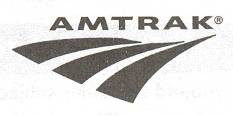
Boston, in the late 1800’s had as many as 8 different passenger depots. The city officials, recognizing that this was too much of a “good thing” convinced the railroads to consolidate down to two stations. The first to be constructed was Boston North Station, opening in 1894. It was the station designed to serve the “New England Trains,” that is to say, the Boston and Maine. It was soon eclipsed by the structures surrounding it, and today “Boston North Station” is completely engulfed by Boston’s Fleet Center, home of the Basketball Celtics and the Hockey Bruins teams.
Boston’s South Station followed 4 years later, seeing its first revenue passengers pass through its headhouse in September 1898. The Boston South Station was designed to serve the “Northeast Trains,” that is to say the Boston and Albany (later part of the New York Central System), and the New York, New Haven, and Hartford Railroad.
As with most passengers stations in America, Boston South Station was at its busiest during World War II. However, 20 years later, the New Haven Railroad, which owned the station through its subsidiary line The Boston Terminal Company, entered bankruptcy and sold the structure to the Boston Redevelopment Authority (BRA).
The initial ideas of BRA included demolishing the old structure and erecting a new complex of office development projects. However, in 1972, at the 11th hour, with demolition already started, BRA changed its mind and retained those parts of the station not already gone, mainly its signature headhouse, and decided to re-think its development ideas. The reason, in part, was the fact that America finally had a passenger rail system, Amtrak, and thus the revival of intercity rail became a possibility.
The station was sold by the BRA to the local Massachusetts Bay Transportation Authority in 1978. Shortly after this transaction, between 1984 and 1990, $195 million was spent to refurbish South Station and make it an “Intermodal” facility including not only intercity passenger trains, and commuter trains, but also inter-city buses, local buses, and a stop on the city’s historic subway system.
The late 1990’s saw Amtrak bring electrification into Boston, thus enabling the fast Acela trains to travel between Boston and Washington DC on a schedule which at this posting calls for a run of 6 ½ hours. Add to these speedy electrics, a complement of “Regional” runs, some through Springfield MA and others through Rhode Island, a daily train to Albany that connects with the New York-Chicago Lake Shore Limited, and commuter trains, to say nothing of all the busses and subway trains, and South Station is once more a busy place. Perhaps not as busy as 1945, but still busy enough to make many realize how close the BRA was to making a fatal city-killing mistake in the late 1960’s.
When Boston South Station was originally built, a coffer dam was constructed to keep the tidal waters of Fort Channel out of the station. Maybe there was a lesson here. Since that time, Boston, in true fashion, continued to “creep in” on Fort Channel with development, culminating with the construction of the infamous Central Artery which carried I-95 though downtown Boston.
In the 1990’s Boston realized that the Central Artery was out-of-date and started a new project intended to replace the Artery, the so-called “Big Dig.” During the planning phase, Rail Passenger advocates lobbied to have a rail connection between Boston’s North Station and Boston’s South Station become part of the project (the tunnel runs right by both stations). They were unsuccessful in their efforts and so even today, travelers coming in from the “Northeast” who desire to travel to “New England” must detrain and either catch a bus at South Station, or take the MTA to North Station where The Downeaster stops (Amtrak recommends if you do this, don’t get off your NE Corridor train at South Station, get off at the Back Bay station and catch the Orange MTA which runs from the 128th station up past Fleet Center and Boston’s North Station).
But remember the coffer dam of 1898? In a final fitting tribute to the shortsightedness of the planners of the Big Dig, it has been reported from time to time, that the new I-95 tunnel project has an awful lot of water being pumped out of it, far more, so it is rumored, than was originally projected. As the actress on the old Margarine commercial used to say: “It’s not NICE to fool with Mother Nature!”





